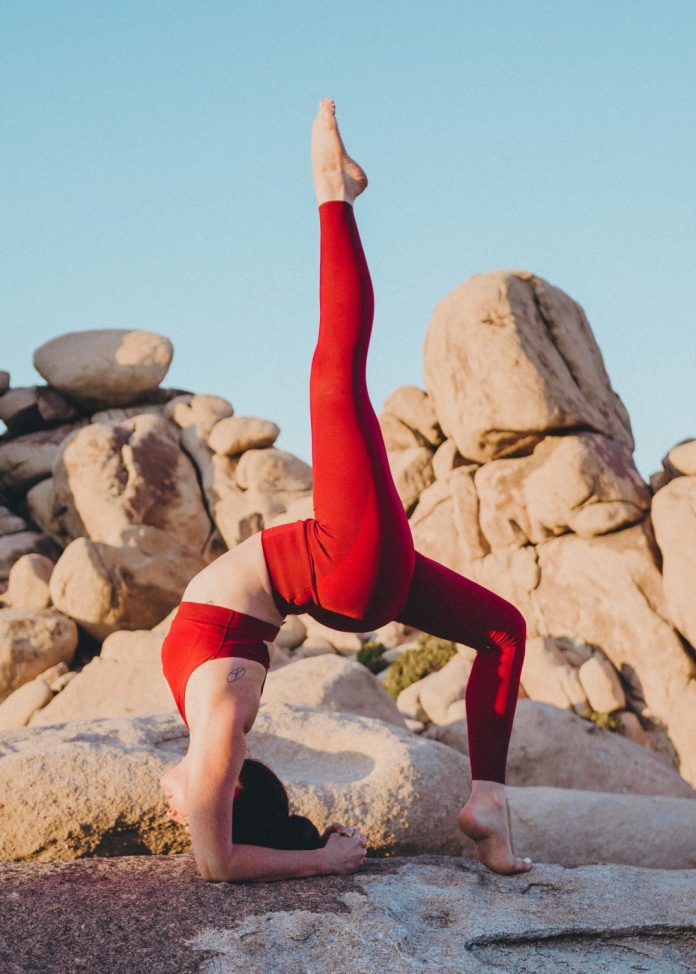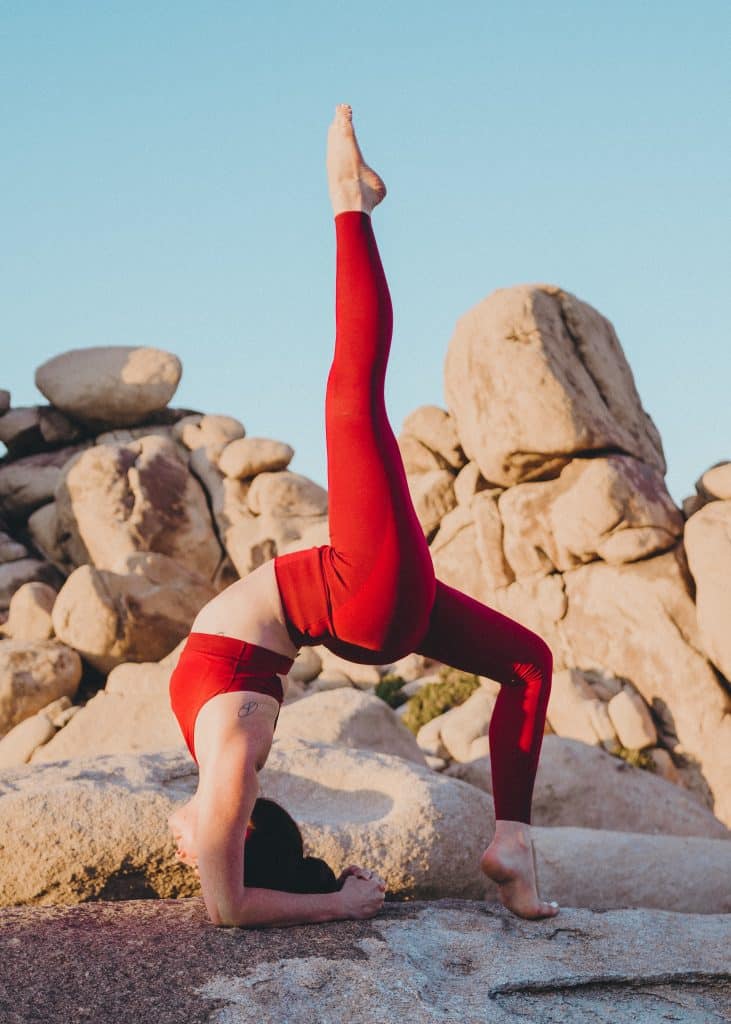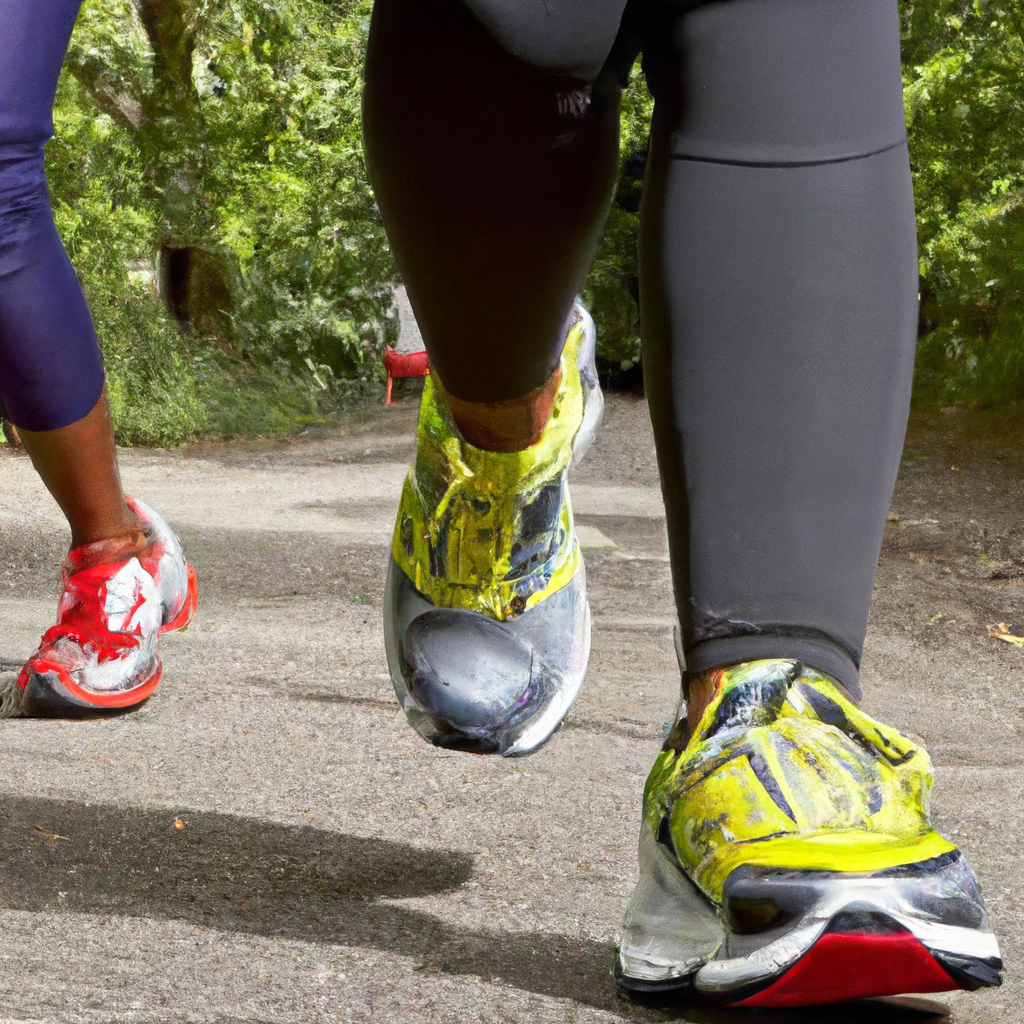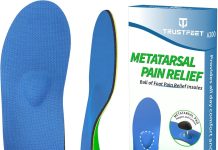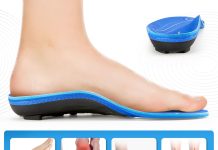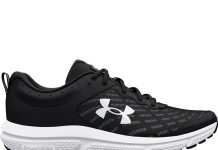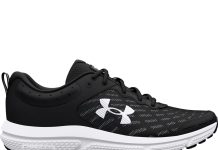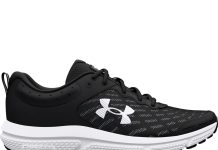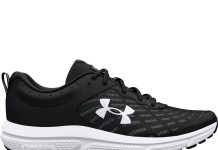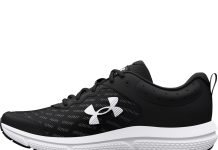Lace-up your sneakers and get moving!
Today, we’re exploring a question many of us have pondered during our fitness journeys: can running shoes be used for brisk walking?
We all know that finding the perfect pair of shoes can make all the difference, but are running shoes suitable for this lower-impact activity?
Let’s dig into the details and find out if it’s time to bring those running shoes out of retirement for a brisk walk in the park.
Factors to Consider
Difference Between Running and Brisk Walking
Before deciding whether to use running shoes for brisk walking, it’s essential to understand the difference between the two activities. Running involves a higher impact on the feet and joints, with a faster pace and greater intensity. On the other hand, Brisk walking involves walking at a fast pace but with less impact and intensity. While both activities provide numerous health benefits, the choice of footwear may vary depending on the specific requirements of each activity.
Impact on Feet and Joints
One crucial factor to consider when choosing footwear for brisk walking is its impact on your feet and joints. Running shoes are designed with specific features to provide cushioning and shock absorption, which are necessary for the high impact involved in running. However, brisk walking puts less stress on the feet and joints, making extensive cushioning less essential.
Walking Form and Stride Length
Another point to consider is your walking form and stride length. Running shoes are designed to accommodate a longer stride length and a different footstrike pattern than walking shoes. When walking briskly, our walking form and stride length may differ from running, requiring shoes that provide appropriate support and flexibility.
Benefits of Using Running Shoes for Brisk Walking
Cushioning and Shock Absorption
One primary benefit of running shoes for brisk walking is their superior cushioning and shock absorption capabilities. Running shoes are specifically engineered to protect the feet and joints from the repetitive impact of running. This added cushioning can contribute to a more comfortable walking experience, especially for those who prefer a brisk pace or may have existing foot or joint issues.
Arch and Heel Support
Running shoes are designed to provide excellent arch and heel support, as these areas are particularly vulnerable to strain and injury during high-impact activities. The arch and heel support in running shoes can help prevent excessive pronation or supination, maintaining proper foot alignment even during brisk walking. This support is significant for individuals with flat or high arches, as it can alleviate discomfort and reduce the risk of injuries.
Breathability and Comfort
Running shoes often feature breathable materials and advanced ventilation systems, allowing for better air circulation around the feet. This feature can be particularly advantageous during brisk walking, as it helps prevent excessive sweating and reduces the likelihood of developing blisters or discomfort due to moisture. Additionally, the overall comfort offered by running shoes can enhance the walking experience and make it more enjoyable, even during longer walks.
This image is the property of images.unsplash.com.
Drawbacks of Using Running Shoes for Brisk Walking
Weight and Bulkiness
One main drawback of running shoes for brisk walking is their weight and bulkiness. Running shoes are typically designed with additional cushioning and support, which can make them heavier compared to shoes specifically designed for walking. This additional weight may not be noticeable during short walks. Still, it can become tiring and cumbersome for longer walks or when aiming to maintain a brisk pace throughout the activity.
Sole and Traction
Running shoes’ sole design and traction are optimized for running on various terrains, including asphalt, trails, or track surfaces. While this may be beneficial for runners, it can be less ideal for brisk walkers, who often encounter different surfaces such as concrete sidewalks or paved paths. The outsole patterns and materials used in running shoes may not provide the same level of grip and stability required for brisk walking, leading to potential slips or lack of traction.
Durability and Wear Patterns
Running shoes are designed to withstand the rigorous demands of running, which can result in the formation of specific wear patterns on the soles over time. These wear patterns may not align with the specific movement patterns of brisk walking, potentially compromising the overall durability and longevity of the shoes. Additionally, using running shoes solely for walking may result in a shortened lifespan of the shoes, requiring more frequent replacements compared to walking-specific footwear.
Choosing the Right Running Shoes for Brisk Walking
Walking-Specific Features
If opting for running shoes for brisk walking, selecting a pair that incorporates walking-specific features is essential. Look for shoes that balance cushioning and support, with a sole design that provides adequate traction on the surfaces you plan to walk on. Additionally, consider opting for shoes with a more flexible forefoot to accommodate the different footstrike patterns and stride lengths utilized during brisk walking.
Proper Fit and Sizing
Choosing the right fit and size is crucial for running shoes for brisk walking. Ill-fitting shoes can result in discomfort, blisters, or even injuries. It is recommended to try on shoes later in the day when the feet are at their most significant and to leave about a thumbnail’s width of space between the end of the longest toe and the front of the shoe. Taking the time to measure and assess the fit properly can ensure a comfortable and supportive walking experience.
Quality and Brands
Purchasing running shoes from reputable brands known for their quality craftsmanship and attention to detail can make a significant difference in the overall performance and durability of the shoes. Established brands often invest in research and development to create footwear that caters to the specific needs of athletes and walkers alike. Prioritize well-known brands with a history of producing reliable, high-quality running shoes.
This image is the property of images.unsplash.com.
Alternatives to Running Shoes
Walking Shoes
Walking shoes are specifically designed for walking activities, making them an excellent alternative to running shoes for brisk walking. These shoes offer features such as enhanced flexibility, lightweight construction, and optimal arch support for the foot’s natural movement during walking. Walking shoes are often designed with a lower profile and prioritize comfort and stability for extended periods of walking.
Trail Running Shoes
For those who enjoy brisk walking on uneven or off-road terrains, trail running shoes can provide the necessary stability and protection. The rugged outsoles, durable materials, and reinforced toe caps of trail running shoes are designed to withstand the challenges encountered during outdoor exploration. While trail running shoes may have slightly heavier construction, they offer enhanced traction and water resistance for varied terrains.
Cross-training Shoes
Cross-training shoes are versatile footwear options catering to various activities, including brisk walking. These shoes are designed to handle multidirectional movements and provide stability for various fitness pursuits. While cross-training shoes may not offer the same level of cushioning or arch support as dedicated walking shoes, they can still provide adequate comfort and support for individuals who engage in various activities, including brisk walking, as part of their fitness routine.
Expert Opinions on Using Running Shoes for Brisk Walking
Podiatrists’ Recommendations
Podiatrists, specialists in foot health, generally advise individuals to use footwear designed for walking rather than running shoes for brisk walking. They emphasize the importance of the proper support, cushioning, and flexibility of walking shoes, considering the differences in footstrike patterns and impact between running and brisk walking. However, some podiatrists agree that running shoes can be used for brisk walking if they meet specific criteria, particularly regarding cushioning and arch support.
Fitness Instructors’ Perspectives
Fitness instructors often encounter individuals who engage in brisk walking as part of their exercise routines. They commonly recommend using running shoes for brisk walking due to the added cushioning and shock absorption features designed for the higher impact of running. Fitness instructors encourage individuals to choose shoes with adequate arch support and comfortable fit to ensure a safe and enjoyable walking experience, regardless of the chosen footwear.
Experienced Walkers’ Insights
Experienced walkers who have used running shoes for brisk walking share varied perspectives. Some find running shoes provide adequate cushioning and comfort, making them suitable for brisk walking. Others prefer walking-specific shoes, as they appreciate the unique features and lightweight design tailored explicitly for walking. Ultimately, it comes down to personal preference, comfort, and individual walking style.
This image is the property of images.unsplash.com.
Tips for Comfortable Brisk Walking with Running Shoes
Gradual Transition and Break-In Period
When transitioning from walking shoes to running shoes for brisk walking, it is essential to allow for a gradual adjustment period. Start by incorporating short walks with running shoes and slowly increase the duration as your feet and muscles adapt. This gradual transition can reduce the risk of discomfort, blisters, or muscle fatigue due to the differences in shoe design and support.
Orthotic Inserts
Orthotic inserts can be beneficial when using running shoes for brisk walking, especially for individuals with specific foot conditions or needing additional arch support. These inserts can provide customized cushioning and stability, addressing individual needs and enhancing overall comfort. Consult a podiatrist or a specialist to determine if orthotic inserts suit your feet and walking style.
Proper Maintenance and Care
Taking care of your running shoes ensures their longevity and performance. Regularly clean your shoes according to the manufacturer’s instructions, removing any debris or dirt affecting their traction or cushioning properties. Additionally, monitor the wear patterns on the soles and replace the shoes when signs of excessive wear or loss of cushioning become apparent.
Potential Risks and Injuries
Overuse Injuries
Regardless of the type of footwear used, repetitive activities like brisk walking can lead to overuse injuries. Common overuse injuries associated with brisk walking include stress fractures, shin splints, and plantar fasciitis. To reduce the risk of these injuries, listening to your body, gradually increasing activity levels, and incorporating rest and recovery periods into your routine are essential.
Sprains and Strains
Sprains and strains can occur during brisk walking if the shoes do not provide adequate support and stability. Sudden movements, uneven surfaces, or inappropriate footwear can cause ligament sprains in the ankle or strain muscle injuries. Choosing shoes that offer proper ankle support and a stable base can significantly reduce the risk of these injuries.
Foot, Knee, and Hip Pain
Using running shoes for brisk walking may not provide the optimal support needed for the specific movement patterns of this activity. Insufficient arch support or cushioning can lead to foot, knee, or hip pain. These discomforts can indicate improper shoe selection or may arise due to an individual’s unique biomechanics. It’s crucial to consult with a healthcare professional if persistent pain occurs.
When Not to Use Running Shoes for Brisk Walking
Underlying Foot Conditions
Individuals with specific foot conditions, such as plantar fasciitis, bunions, or Morton’s neuroma, may benefit from using shoes specifically designed for their condition. While running shoes may offer some support and cushioning, dedicated walking shoes often provide targeted features to alleviate the symptoms associated with particular foot conditions. Consult a healthcare professional to determine the most appropriate footwear for your specific needs.
Medical Recommendations
In some cases, medical professionals may explicitly advise against using running shoes for brisk walking due to specific health conditions or injuries. If a healthcare professional recommends alternative footwear or activity modifications, it is essential to follow their guidance to ensure proper care and prevent further injuries or complications.
Activity-Specific Requirements
Certain activities, such as hiking or long-distance walking, may require specialized footwear that goes beyond the features offered by running shoes. These activities often involve different terrains, prolonged durations of walking, or additional support requirements. It is crucial to select footwear that meets the specific demands of the activity, ensuring comfort, safety, and performance.
Conclusion
The decision to use running shoes for brisk walking ultimately depends on personal preference, comfort, and the individual’s walking style. While running shoes can offer benefits such as cushioning, arch support, and overall comfort, they may not be the ideal choice for everyone.
Considering factors such as the impact on feet and joints, shoe weight and bulkiness, and the presence of walking-specific features can help make an informed decision. Consulting with healthcare professionals or specialists can provide personalized recommendations based on individual needs and foot conditions.
Choosing the proper footwear should prioritize personal comfort, allow for a safe and enjoyable brisk walking experience, and promote overall foot health.

